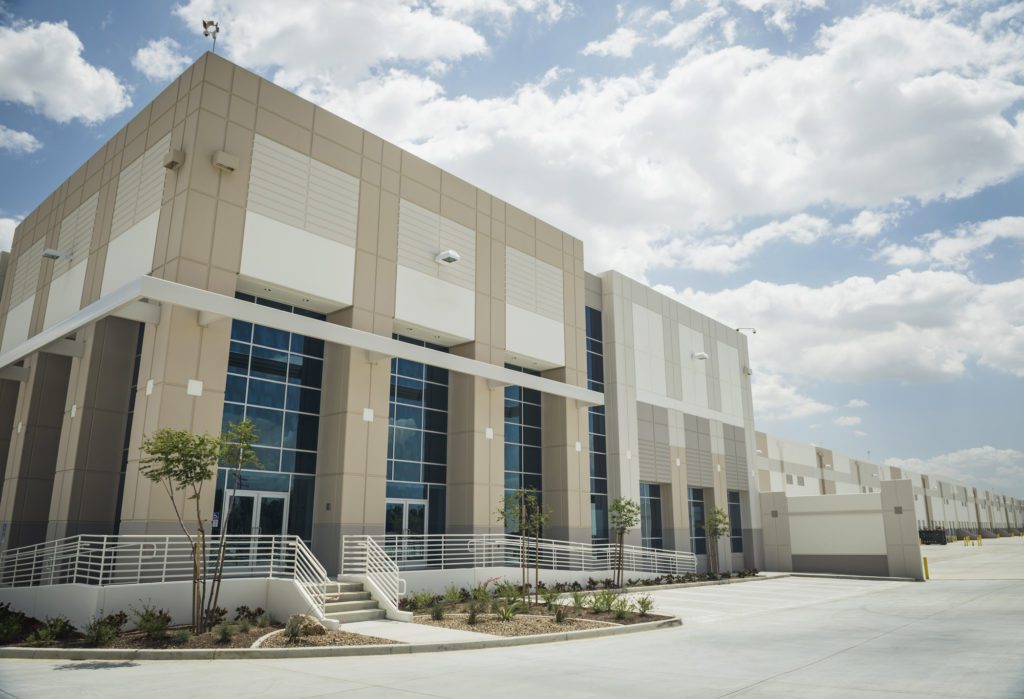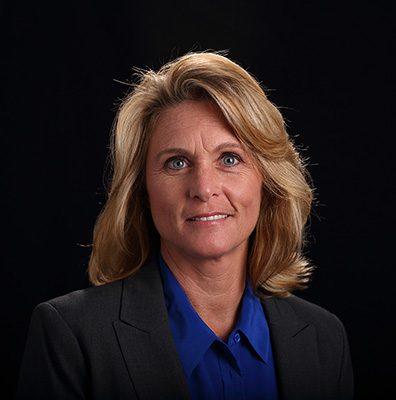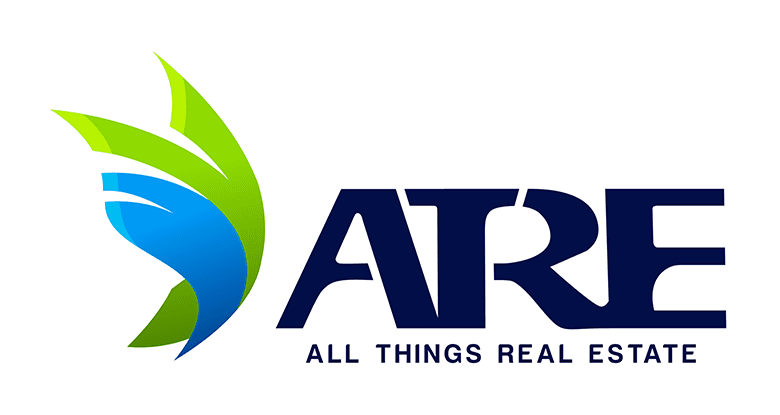All Things Real Estate Group
Division of Luxre Realty Inc. Southern California Commercial Investing
Whether for sale or lease, in-state or out of state our listings span several traditional asset types, including land, office, retail and industrial, plus specialty properties, such as hotel and multifamily.
Commercial Real Estate Answers
All Things Real Estate (ATRE) delivers a wide range of commercial property services that produce exceptional results for our clients. ATRE specializes in 1031 Exchanges and understands every aspect of the real estate business with customized solutions that work with your unique needs including representing landlords, tenants and developers in complex leasing, sales, and investment negotiations. Our personal approach ensures that everyone – on all sides of the deal – feels like partners in the process to enable a mutually beneficial outcome.

What Is Happening in the Real Estate Market Right Now
Weekly Top Stories
Housing Production Halts in West Coast Cities
Multifamily Construction Starts Fall From San Diego to Seattle After Years of Robust Building The 30-unit Ardmore Lofts are under construction in Los Angeles’ Koreatown neighborhood at 933 S., Ardmore

1031 Exchange – Reverse Exchange
Reverse Exchange Reverse exchanges are the most complex type of exchange. Such an exchange permits the investor to acquire their replacement property before the relinquished property is sold. Under no
1031 Exchanges
What is a 1031 Exchange Broadly stated, a 1031 exchange (also called a like-kind exchange or a Starker exchange) is a swap of one investment property for another. Most swaps
Industrial Building in North County San Diego sells for twice it’s value from 2021
Broadly stated, a 1031 exchange (also called a like-kind exchange or a Starker exchange) is a swap of one investment property for another. Most swaps are taxable as sales, although
US Senate’s Schumer-Manchin Deal Targets a Favorite Real Estate Tax Break
Change to Treatment of Carried Interest Included in Proposed Inflation Reduction Act of 2022 Democrats have revived a historically hard-to-pass tax reform initiative that affects the commercial real estate industry
Housing Production Halts in West Coast Cities
Multifamily Construction Starts Fall From San Diego to Seattle After Years of Robust Building
 The 30-unit Ardmore Lofts are under construction in Los Angeles’ Koreatown neighborhood at 933 S., Ardmore Ave. Cities along the West Coast, already among the nation’s most-housing constrained, are seeing fewer construction starts this year. (Lori Smith/CoStar)
The 30-unit Ardmore Lofts are under construction in Los Angeles’ Koreatown neighborhood at 933 S., Ardmore Ave. Cities along the West Coast, already among the nation’s most-housing constrained, are seeing fewer construction starts this year. (Lori Smith/CoStar)
By Jack Witthaus, Katie Burke, Randyl Drummer and Lou Hirsh
CoStar News
July 25, 2023 | 2:10 P.M.
Up and down the West Coast apartment construction sites are falling quiet despite high demand in a worsening housing shortage.
Fewer multifamily projects have broken ground this year from Seattle to San Diego in one of the slowest starts to apartment construction in a decade. In San Jose, no apartments have broken ground after more than 7,000 started construction last year. In Seattle, 3,433 apartments started building in the first six months, a drop of nearly 60% from the same time last year.
Analysts and real estate executives are already preparing for the lack of building in coming years because apartment construction can’t simply catch up later with projects taking roughly two years to build. Eric Bolton — CEO of Tennessee-based Mid-America Apartment Communities, one of the nation’s biggest apartment owners — said at a real estate conference last month in New York that by 2024 or 2025 the drop in apartment construction will mean demand further overshooting supply.
“The market gets very nervous about supply pressure,” he said, adding that he expects the need will grow in years to come on the West Coast.
Multifamily construction starts are also falling nationally because rising interest rates make it more difficult for developers to build profitably. The West Coast, though, stands as an outlier to other faster-growth Sun Belt markets where construction continues at a faster clip. That’snot only because of demographic shifts but also partly because of red tape and high construction costs developers face building in California, Oregon and Washington.
The lack of apartment construction on the West Coast inevitably will cause increased housing prices, further making apartment renting out-of-reach in some of the costliest places to live in the world. That’s because, unlike fast-growing Sun Belt markets, even the robust apartment construction of recent years is at a lower percentage of the total overall number of apartment units in West Coast cities.
“It’s the worst thing that could be happening,” said Jay Lybik, national director of multifamily analytics at CoStar Group. “The region still doesn’t have enough housing.”
To be clear, the high-growth West Coast cities have been losing momentum since the pandemic began with many experiencing population declines and job relocation to other parts of America. While rents remain at record levels, the growth of apartment rents has been cooling because of economic uncertainty and job contraction on the West Coast.
Here’s a look at how the slowed construction is playing out across some West Coast cities.

Los Angeles
A surface level parking lot in Los Angeles’ North Hollywood neighborhood gives little indication it’s the future site of one of the city’s largest apartment construction projects in decades.
Developer Trammell Crow was supposed to start in third-quarter 2022 on District NoHo, a 2 million-square-foot, mixed-use project that was planned feature about 1,500 apartments wrapped around the North Hollywood transit hub at Lankershim and Chandler boulevards.
However, the project’s development team, which includes LA Metro, revealed in June that it wanted to decrease the project’s total units and commercial space in response to the changing economic climate. A memo dated June 2 blamed “rising construction costs and the increasingly uncertain climate for capital sources to fund the Project” when the developers tried to bring add more income restricted units to the development.
Rising interest rates are the biggest reason apartment construction isn’t happening as much this year as in years past in Los Angeles, said Chris Tourtellotte, managing director of LaTerra Development, which isn’t involved in the North Hollywood project but is one of the most active apartment builders in greater L.A. Rising interest rates and the crisis at some U.S. banks this year have made it challenging to secure the necessary financing to toss dirt.
“Most developers are having a difficult time closing construction loans,” Tourtellotte said.
Tourtellotte said his firm, though, isn’t pausing and forecasts that 2025 will be a good time for some developers to complete buildings in greater L.A. due to the lack of competition. LaTerra expects to have a pair of projects completed that year. The company has been able to move projects forward because it has access to competitive debt funding capital and banks that are still lending to developers. It also is developing on land it owns and has entitled.
Kevin Newman, chairman and CEO of Costa Mesa-based apartment architect Newman Garrison + Partners, has been hearing from developers about the painful economics of building right now. One developer client said that they’ve talked with 60 lenders and still can’t get the financing to move forward.
Newman, though, is optimistic about construction levels rebounding by the end of next year as capital markets and interest rates ease. That means a bevy of new supply could be coming online starting around late 2026.
“We could see going back to 2021 levels” of construction, Newman said.
David Evans, a multifamily investment sales broker at Kidder Mathews in Los Angeles, said he isn’t as optimistic that Los Angeles rents will rise at a faster clip in 2025. Asking rents in greater Los Angeles are up less than 1% year over year after peaking at a one-year increase of 7.4% in first-quarter 2021, according to CoStar data. The 10-year rental growth market average is about 3.2%.
Evans said some renters are getting priced out of the city while other some L.A. markets are seeing too much construction, which may lead to an oversupply of units.
“Unless there’s some dynamic job growth, those buildings aren’t going to get filled up,” Evans said.
Silicon Valley
Job and income growth had never been an issue for the tech-concentrated Silicon Valley area as both fueled record amounts of multifamily development across the region. Yet even before widespread layoffs, a tightened financing climate and unpredictable economy layered stress on the market’s outlook over the past year, there was another culprit that set the stage for little to no development activity: exorbitant construction costs.
“Construction costs got to a point when everyone’s pro formas got turned upside down,” Erik Hayden, the founder of San Jose, California-based development firm Urban Catalyst told CoStar News. “The Bay Area has some of the most expensive construction costs in the whole world. Add in COVID, and add in interest rate increases, and that financing has become more challenging, and it really doesn’t help.”
Developers have long chased after record rent growth and strengthened demand across the Silicon Valley housing market, home to some of the nation’s most expensive neighborhoods, despite the challenges and high costs associated with new construction. More than 8,300 multifamily units are currently underway, according to CoStar data, the most reported over the past 15 years.
But that pipeline is drying up as financing for projects — which are becoming more expensive to build — is getting harder to secure.
Third-party lenders, a source of financing Silicon Valley multifamily developers often depend on to capitalize projects, have scattered in recent months, Hayden said, making it more challenging to get those proposals off the ground.

“There was a lot of positive momentum coming out of COVID, and in early 2022, we saw financing markets pick up in a big way,” the Urban Catalyst executive said. “But by the end of last year [lenders] dropped projects because of inflation and economic uncertainty. It looked like were in the clear, but since then, things have gotten worse. We’ve all heard them say, ‘we’re pencils down now, but after the Fourth of July we’ll have more confidence in the market and we’ll start lending again.’ There is a lot of speculation that things will be better in the second half of this year, but I haven’t seen that happen yet.”
After projects with more than 500 units each went under construction last year, the San Jose market, which encompasses Silicon Valley, has reported no new housing starts for all of 2023, according to CoStar data.
For Urban Catalyst, which has a San Jose-focused development pipeline valued at more than $1.5 billion, the financing challenges has meant the firm has had to adjust its game plan for two multifamily projects it had initially planned to break ground on sometime this year after landing approvals in late 2022.
It recently kicked off efforts to line up capital for its high-rise Echo apartment tower and have decided to self fund the construction for its Aquino @ Downtown West project. Both would collectively add more than 635 units to downtown San Jose, an area where rents for higher-end units can easily command upwards of $4,000 per month.
While Hayden said he’s hopeful that construction on both projects can start next year, he’s willing to wait in order to land the right terms.
“There has been a tidal wave of debt equity funds that have come out of the market, but those charge a much higher interest rates and are typically very risky,” he said. “If you don’t meet what your proforma says, you have the possibility of losing all the equity you put into the project. That’s a risk we don’t want to take.”
While there are plenty of multifamily construction sites throughout the Bay Area that have been arrested by a challenged financing landscape, real estate executives know its a short-term issue. Multifamily rents across Silicon Valley are poised to climb even higher, according to CoStar analysis, making it easier for developers to leap over any temporary economic hurdles to capitalize on the growing market.
“There will be a lot more pro formas that will pencil if rents go up over the next 10 years,” Hayden said.
And as rents go up and financing markets begin to ease, housing start figures will follow closely behind. That is, Hayden said, until construction costs once again pull everything right back again.
San Diego
“Construction activity has remained relatively consistent in San Diego, which is to say that it has not been enough,” said Joshua Ohl, senior director of market analytics for CoStar Group in San Diego.
The San Diego region has seen some of the state’s highest rent growth during the past year at 2.7%, and its vacancy rate is historically low at 3.5%. The approximately 8,000 multifamily units under construction represent about 2.9% of total regional inventory, but the bulk of those apartments are high-end units concentrated in downtown San Diego, rather than spread throughout the region.
Ohl said most regional estimates suggest San Diego should be adding 15,000 total housing units annually. But the region typically tops out around 8,000 multifamily units, with single-family units adding about another 2,000 annually.
“Construction starts have remained stubbornly low in recent quarters following the rapid rise in interest rates coupled with the rise in cost for most construction materials,” Ohl said. “San Diego could feel the impact of even fewer supply additions in the coming years with fewer properties going vertical in the present.”
Inland Empire
California’s Inland Empire has long been known as a relatively more affordable region for residents who commute to work in more expensive regions including Los Angeles and San Diego. Inland apartment construction has paced ahead of its Southern California neighbors in recent years, but the region is not immune to rising rents and construction costs.
“Developers were enticed to initiate construction by a rapid jump in rent potential from pre-pandemic levels,” said Jesse Gundersheim, senior director of market analytics for CoStar Group, who tracks the Inland Empire.
He noted current construction in the Inland Empire, at about 6,400 units, amounts to 3.8% of existing inventory. That’s ahead of California’s statewide average, but lags behind the national average of 5.6% of existing inventory.
“Meanwhile, demand has been uneven,” Gundersheim said. “Occupancy is growing again but contracted over the past year.” The region’s apartment vacancy rate is at 5.4%, above historical averages, and appears to be heading higher.
Developers could be discouraged to build more Inland apartments beyond the coming year, based on rising vacancy rates and rents that grew by a slim 0.3% over the past 12 months.
“The substantial amount of apartment construction scheduled for delivery over the next year is forecast to outpace demand growth,” Gundersheim said.
Seattle
Seattle has logged some of the strongest annual growth in housing starts of any major West Coast urban area over the past two decades.
But despite housing construction that still hovers near record levels, Emerald City — and Washington as a whole — are still falling behind in building new housing for its booming population.
The region has added an average of nearly 10,000 multifamily units annually over the past decade and about 28,000 units are under construction this year, CoStar data shows.
“Jobs and population grew faster than housing in the 2010s, and we’re still playing catch up to some extent,” said Elliott Krivenko, CoStar’s Seattle market analyst.
That said, the pipeline of new projects has dried up. The number of housing permits in Seattle declined more than 25% over the 12 months ending May 1 — by far the biggest drop among such big West Coast cities as Los Angeles, San Francisco and Portland, according to the data.
This year’s decline comes at the worst possible time for Seattle, which recently reclaimed its title as the fastest-growing big city in the United States by population. The city added 17,750 people in the 12 months ending July 1, 2022, for a total population of just under 750,000, according to U.S. Census data released in May.
Seattle’s 2.4% population growth rate was the fastest among the 50 largest cities, easily beating the Sun Belt boom towns that round out the top five fastest growing: Fort Worth, Texas; Charlotte, North Carolina; as well as Miami and Jacksonville in Florida.
Seattle’s King County will need to add almost 17,000 new homes a year for the next two decades to keep up with that growth, according to state Commerce Department projections this year.
The housing deficit extends across the Evergreen State. Washington has added an average of about 35,000 housing units per year over the past decade, according to state data — well short of the projected 55,000 per year totaling more than 1.1 million new homes needed over the next 20 years, according to the forecast.
Still, Washington’s legislature this year has passed more than a dozen bills aimed at boosting housing supply in a state where it’s expensive.
Washington joined Oregon and California in overhauling single-family zoning to increase apartment density and address a worsening housing shortage that proponents say has contributed to rising affordability concerns and homelessness.
The legislature and Gov. Jay Inslee also pushed through laws that make it possible to permit and build more accessory dwelling units and streamline local permit and development regulations.
“We have extremely long timelines for building large projects and many proposals never see the light of day,” Krivenko said. “But compared to Portland or some California cities, it may be a bit easier to get projects out of the ground and have them pencil out.”
Portland
Portland, another Pacific Northwest tech stronghold, has been losing net population just as multifamily development has ramped up.
Rose City lost more than 8,000 people last year for a 1.3% decline, ranking 47th among the 50 largest cities for population changes, according to the May census data.
As people leave Portland for other parts of the country, the city’s multifamily construction pipeline has expanded over the past two years to 8,700 units. That will boost the region’s apartment inventory by about 4% as developers finish a wave of mostly luxury units in coming months, said John Gillem, CoStar’s market analyst in Portland.
However, like other West Coast cities, Portland’s apartment starts have slowed dramatically this year.
Just over 1,560 units began building in the first half of 2023 after about 5,000 kicked off construction in the same time last year. Over the past 12 months, apartment starts have fallen almost 37% from the prior year period to less than 4,650 units, CoStar data shows.
Meanwhile, apartment leasing has cooled dramatically from its record-setting levels of mid-2021, contributing to an increase in the greater Portland’s vacancy to 6.5% from under 5% a year ago. CoStar projects that the region’s apartment vacancy rate could reach 7.4% by the end of the year, the highest in nearly 20 years.
The latest data suggests the pace of multifamily permits pulled in the region this year may surpass the 2021 mark of about 6,500 units.
“This means more units will be hitting the market in the coming quarters in the face of dwindling demand,” Gillem said.
1031 Exchange – Reverse Exchange
Reverse Exchange
Reverse exchanges are the most complex type of exchange. Such an exchange permits the investor to acquire their replacement property before the relinquished property is sold. Under no circumstance may an investor be on title to both properties simultaneously. In September 2000, the IRS indicated that a reverse exchange would be permitted if the transaction fell within the scope of “safe harbor” protection. The durational requirements of the “safe harbor” require the identification of the relinquished property within the 45-day identification period and the sale of the relinquished property within the 180-day exchange period. The trigger date for these periods is the “parking” of either the relinquished or replacement property with an Exchange Accommodation Titleholder (“EAT”). ERI arranges for one of its subsidiaries to function as an EAT. Reverse exchanges are effectuated in one of two ways depending on which property is to be “parked.” Under either scenario, the parked property must be held by the EAT for federal and state income tax purposes.
Option A: Park Replacement Property — Exchange Last
Under this scenario, title to the replacement property is transferred to the EAT, and not the investor, at close of escrow. The date of this transfer triggers the 45-day period to identify the property to be relinquished as well as the exchange period to sell the identified relinquished property. Once the escrow on the relinquished property is ready to close, the EAT enters into a simultaneous exchange with the investor to transfer the title to the parked replacement property to the investor upon the transfer of the relinquished property to a third-party buyer.
Option B: Park Relinquished Property — Exchange First
This scenario more commonly occurs when financing is obtained for the acquisition of the replacement property. Prior to the close of escrow on the replacement property, the relinquished property must be transferred to the EAT. The transfer to the EAT triggers the 45-day period to identify the property to be relinquished and the exchange period during which the identified relinquished property will be sold. Accordingly, this transfer ideally takes place shortly before the closing of the replacement property. ERI acquires the right to purchase the replacement property and causes it to be deeded directly from the seller to the investor in exchange for the investor’s transfer of the relinquished property to the EAT. The relinquished property is subsequently sold to a third-party buyer within the exchange period with the EAT acting as the titleholder.
Issues to Consider
Any funds brought in for the acquisition of the replacement property by the investor may be reimbursed to the investor from the proceeds of the relinquished property and are not subject to capital gains tax. Remaining proceeds can be utilized to reduce debt previously incurred for the acquisition of the replacement property. The investor bears any costs associated with the reverse exchange. For example, a voluntary transfer of title triggers property reassessment, which can result in the issuance of a supplemental property tax bill. Other common costs include obtaining both title insurance and a binder policy, as well as adding the EAT on the liability insurance policy for the parked property. In addition, city and county documentary transfer taxes may apply.
1031 Exchanges
What is a 1031 Exchange
Broadly stated, a 1031 exchange (also called a like-kind exchange or a Starker exchange) is a swap of one investment property for another. Most swaps are taxable as sales, although if yours meets the requirements of 1031, you’ll either have no tax or limited tax due at the time of the exchange.
In effect, you can change the form of your investment without (as the IRS sees it) cashing out or recognizing a capital gain. That allows your investment to continue to grow tax-deferred. There’s no limit on how frequently you can do a 1031 exchange. You can roll over the gain from one piece of investment real estate to another and another and another. Although you may have a profit on each swap, you avoid paying tax until you sell for cash many years later. If it works out as planned, you’ll pay only one tax at a long-term capital gains rate (currently 15% or 20%, depending on income—and 0% for some lower-income taxpayers, as of 2022).
To qualify, most exchanges must merely be of like-kind—an enigmatic phrase that doesn’t mean what you think it means. You can exchange an apartment building for raw land or a ranch for a strip mall. The rules are surprisingly liberal. You can even exchange one business for another but there are traps for the unwary.
The 1031 provision is for investment and business property, though the rules can apply to a former principal residence under certain conditions. There are also ways that you can use 1031 for swapping vacation homes—more on that later—but this loophole is much narrower than it used to be.
Industrial Building in North County San Diego sells for twice it’s value from 2021


Broadly stated, a 1031 exchange (also called a like-kind exchange or a Starker exchange) is a swap of one investment property for another. Most swaps are taxable as sales, although if yours meets the requirements of 1031, you’ll either have no tax or limited tax due at the time of the exchange.
In effect, you can change the form of your investment without (as the IRS sees it) cashing out or recognizing a capital gain. That allows your investment to continue to grow tax-deferred. There’s no limit on how frequently you can do a 1031 exchange. You can roll over the gain from one piece of investment real estate to another and another and another. Although you may have a profit on each swap, you avoid paying tax until you sell for cash many years later. If it works out as planned, you’ll pay only one tax at a long-term capital gains rate (currently 15% or 20%, depending on income—and 0% for some lower-income taxpayers, as of 2022).
To qualify, most exchanges must merely be of like-kind—an enigmatic phrase that doesn’t mean what you think it means. You can exchange an apartment building for raw land or a ranch for a strip mall. The rules are surprisingly liberal. You can even exchange one business for another but there are traps for the unwary.
The 1031 provision is for investment and business property, though the rules can apply to a former principal residence under certain conditions. There are also ways that you can use 1031 for swapping vacation homes—more on that later—but this loophole is much narrower than it used to be.
US Senate’s Schumer-Manchin Deal Targets a Favorite Real Estate Tax Break
Change to Treatment of Carried Interest Included in Proposed Inflation Reduction Act of 2022


Democrats have revived a historically hard-to-pass tax reform initiative that affects the commercial real estate industry as part of a new agreement on Capitol Hill worked out between Sens. Chuck Schumer of New York and West Virginia’s Joe Manchin.
Included in Schumer and Manchin’s proposal, called the Inflation Reduction Act of 2022, is broad language changing the tax law so that what’s referred to as carried interest is treated as ordinary income.
Carried interest is a favorite perk among property professionals in which general partners of private equity, venture capital and hedge funds take shares of profits as dealmakers, not investors. These rewards for good performance typically qualify for treatment as long-term capital gains taxed at a lower rate than ordinary income — 20% versus 37%.
A previous congressional proposal going back to the first half of 2021 called Build Back Better also tried to include a change to the tax treatment of carried interest. Manchin opposed that effort because of its $1.75 trillion price tag. That effectively killed the bill.
By comparison, the Inflation Reduction Act is pegged to cost about $433 billion. Manchin also supports other components of the legislation.
“Rather than risking more inflation with trillions in new spending, this bill will cut the inflation taxes Americans are paying, lower the cost of health insurance and prescription drugs, and ensure our country invests in the energy security and climate change solutions we need to remain a global superpower through innovation rather than elimination,” Manchin said in a statement.
Regarding carried interest, Manchin added, “Our tax code should not favor red state or blue state elites with loopholes like [capping state and local taxes] and should focus more on closing unfair loopholes like carried interest. Through the enforcement of a fair tax code, we can use the revenue to cut the deficit and lower the cost of healthcare for working families and small businesses.”
The real estate industry has long opposed treating carried interest as ordinary income.
In a statement earlier this year, Real Estate Roundtable, a nonprofit public policy organization based in Washington, said raising the tax on carried interest “would discourage individuals from pursuing their business vision, encourage debt rather than equity financing, tax sweat equity invested in businesses and slow economic growth.”
The group defended “sweat equity,” or the efforts of labor and time put in by nearly 8 million general partners in U.S. real estate ventures.
“They risk much,” Real Estate Roundtable said. “Their gain is never guaranteed. [Carried interest] is appropriately taxed today as a capital gain.”
The work partners do can include funding development costs and guaranteeing construction financing, all while potentially being exposed to potential litigation, according to the group.
Schumer and Manchin’s proposed legislation still faces an uncertain future as Sen. Kyrsten Sinema, a Democrat from Arizona, has previously opposed increasing taxes on carried interest capital gains, according to media reports.


Mia Worley
With over 18 years in real estate, Mia Worley began her career as a residential agent in Orange County, CA for First Team in 2004. She came back to the business and made the transition into commercial real estate over 12 years ago in North County San Diego.
As a life-long entrepreneur, Mia has a fundamental understanding of owning and running a business which enables her to provide a unique approach to her clients. She strives to work both harder and smarter for each and every client. She is invested in your long-term business goals and is interested in how she can best partner with you to help you achieve them.
Mia understands every aspect of the business including representing Landlords, tenants and developers in complex leasing, sales, and investment negotiations. Her personal approach ensures that everyone – on all sides of the deal – feels like partners in the process to enable a mutually beneficial outcome.
Whether it’s a traditional, creative, co-working, freestanding, an executive suite, in a business park, high-rise building, or vacant land for development, she can help you achieve your goals and objectives. As a native Californian, Mia is well versed in both Central and Southern California locations. In addition, she has successfully assisted clients in Arizona and Nevada. She is always excited to explore new locations, so let her know what you need.

